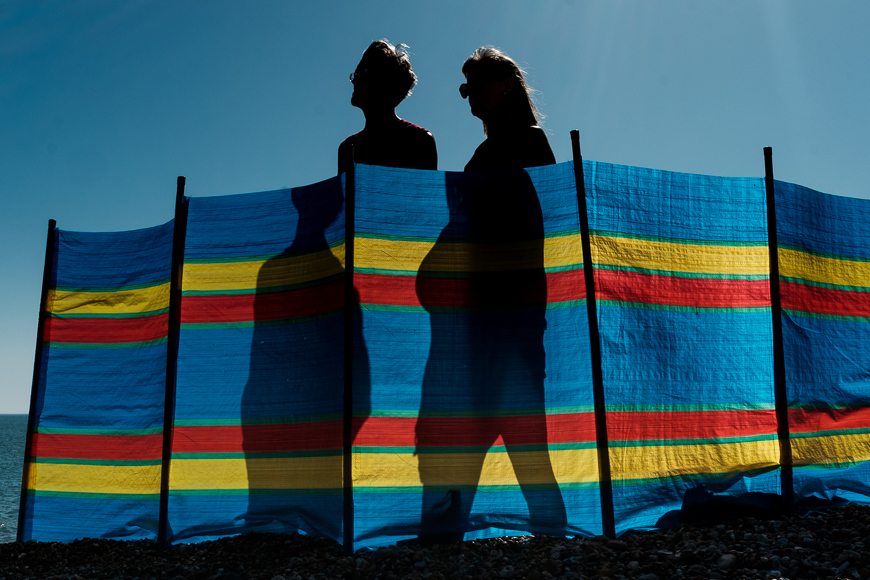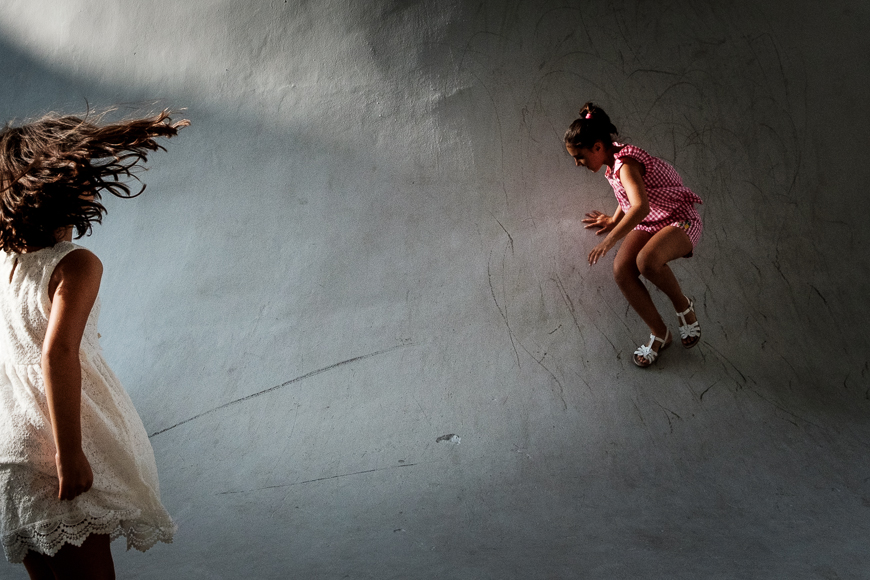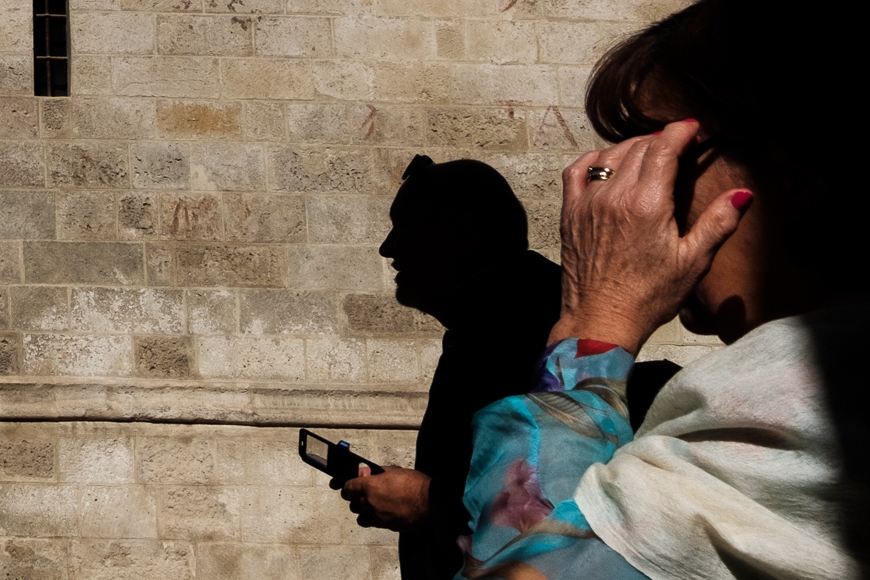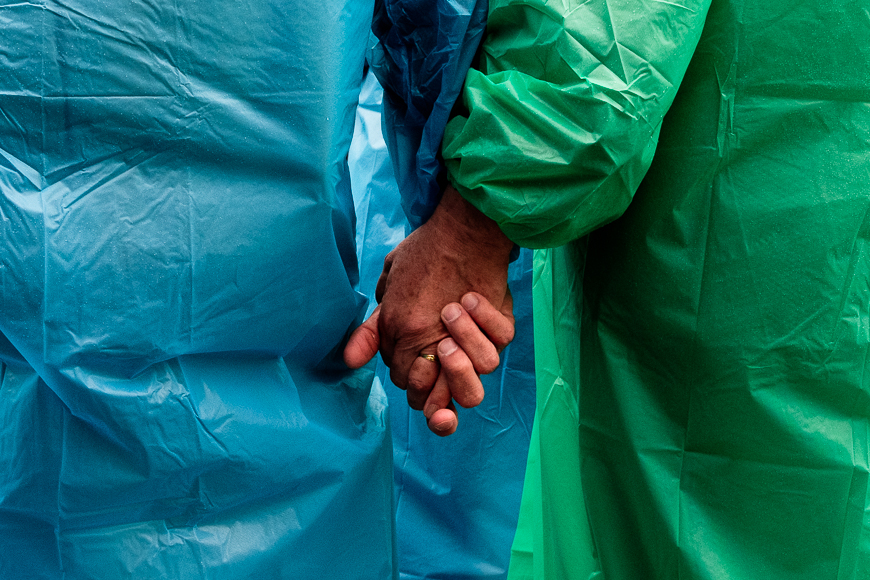
The Ethics of Street Photography: Balancing Art and Privacy
What are the legal and ethical considerations of street photography? Dive in with this guide on how to respectfully create powerful, thought-provoking images.
Learn | Street Photography | By Polly Rusyn
So, you’re out there snapping life on the street, capturing the raw, unscripted moments that make the city so fascinating.
But, have you ever stopped to think about the ethical side of your favorite pastime?
You see, while street photography is undoubtedly a powerful form of artistic expression, it also raises some important questions about privacy and respect.
In this article, I’m going to dive headfirst into the world of ethics in street photography.
We’ll explore the legal nitty-gritty, discuss how to approach sensitive situations, I’ll share tips on practicing street photography respectfully, and delve into the ins and outs of sharing your work.
So, grab your favorite street photography camera, and let’s navigate the delicate balance between art and privacy, ensuring that our street photography is both impactful and responsible.
Let’s do this!
1. Legal Considerations

© Polly Rusyn
Public space vs. private property
Alright, before we dive into the ethical side of things, let’s cover some legal ground.
Generally speaking, taking photos in public spaces is fair game.
After all, if you’re out and about in public, there’s an expectation that you might end up in someone’s shot.
But (and this is a big but!), private property is a whole different ball game. So, if you’re itching to snap a shot in someone’s backyard, think twice and ask permission first.
Respect those boundaries!
Model releases and commercial use
Now, let’s say you’ve taken an amazing street shot, and you’re thinking, “Dang, this would look great on a billboard!”
Well, if your photo features recognizable people, you’ll need to get their permission before using it commercially.
That’s where model releases come in. These documents signed by your subjects give you the legal right to use someone’s likeness for commercial purposes.
So, if you’re planning to make some money from your street shots, be prepared to do some legwork too. Take photos, ask questions later, or ask questions then take photos!
Laws and regulations by country
Heads up, globetrotting photographers! The legal landscape for street photography can vary from country to country.
For example, while it’s generally OK to take photos of people in public spaces in the U.S. and UK, places like France have stricter privacy laws that might land you in hot water if you’re not careful.
So, if you’re planning to take your street photography skills on the road, it’s wise to brush up on local laws and regulations.
Remember, navigating the legal side of street photography can be a bit of a minefield, but it’s important to stay informed and respect the rights of others.
How Much Do You REALLY Know About Photography?! 🤔
Test your photography knowledge with this quick quiz!
See how much you really know about photography...

By understanding the legal boundaries, you can focus on creating powerful images without stepping on any toes – literally or figuratively!
2. Respect and Empathy in Street Photography

© Polly Rusyn
Capturing vulnerable subjects
OK, let’s talk about the heart and soul of ethical street photography: respect and empathy.
When you’re out there capturing life’s unscripted moments, you might come across people who are experiencing tough times – homelessness, grief, or even just a really bad day.
While these shots can be emotionally powerful, it’s important to think about the impact your photography might have on your subject.
Ask yourself, “Would I want someone taking a photo of me in this situation?”
If the answer’s “Nope!” then maybe it’s time to move on.
Understanding cultural sensitivities
Here’s the deal: what might be totally normal in one culture could be a major no-no in another.
So, when you’re out taking photos, it’s essential to be aware of cultural sensitivities and respect local customs.
This might mean not photographing religious ceremonies or sacred spaces without permission, or being extra mindful of personal boundaries in certain cultures.
Do your homework, be aware, and remember – respect is key!
The impact of street photography on subjects
As a street photographer, it’s important to consider the impact your images can have on the people you photograph.
Your subject might not be thrilled about having their face plastered all over the internet or displayed in an art gallery.
So, think about how your work might affect others, and consider creatively obscuring faces or cropping images to protect people’s privacy if needed.
In a nutshell, practicing street photography with respect and empathy means considering the feelings and perspectives of the people you’re photographing.
By putting yourself in their shoes and treating them with kindness, you’ll not only create more powerful and meaningful images, but you’ll also help ensure that the world of street photography remains a positive and respectful space for all.
So, go forth, take those photos, and be the empathetic street photographer the world needs!
3. Ethics in Practice: Tips for Respectful Street Photography

© Polly Rusyn
Obtaining consent when appropriate
Now that we’ve got the empathy and respect angle covered, let’s talk about some practical tips for keeping your street photography on the up-and-up.
First things first: consent. While it’s not always possible to ask for permission before taking a photo, it’s a good idea to do so when the situation allows.
A friendly smile and a quick “Do you mind if I take your photo?” can sometimes be all you need to get a shrug and a yes.
The counterargument to this is simply to take respectful pictures that honor the people in them or use creative techniques to maintain anonymity – not all street photographers are comfortable talking to strangers.
Knowing when not to take the shot
Here’s a tough one: knowing when to walk away.
As a street photographer, you’ll inevitably come across situations where it’s just not appropriate to take a photo.
Trust your gut – if something feels off or makes you uncomfortable, it’s probably best to skip the shot.
Remember, there’s a fine line between capturing a powerful moment and invading someone’s privacy.
- Related: 9 Tips for Capturing Candid Moments
Dealing with confrontation respectfully
Let’s face it: not everyone’s gonna be stoked about having their photo taken.
If someone confronts you, it’s essential to stay calm and respectful.
Explain your intentions as a photographer and offer to delete the image if they’re not comfortable with it.
A little understanding and empathy can go a long way in diffusing tension and maintaining a positive atmosphere on the streets.
Reflecting on your intentions as a photographer
Finally, it’s crucial to regularly check in with yourself and reflect on your intentions as a street photographer.
Are you capturing images that respect your subjects and tell a meaningful story, or are you just trying to get that “shocking” shot for social media likes?
Be honest with yourself, and make sure your work aligns with your values and the principles of ethical street photography.
By putting these tips into practice, you’ll be well on your way to capturing powerful, respectful, and ethically sound street images.
So, strap on that camera, hit the pavement, and keep these principles in mind as you document the beautiful, unpredictable world of the streets!
4. Sharing and Publishing Street Photography

© Polly Rusyn
Social media considerations
Let’s talk about the big, wild world of social media.
Sure, it’s a fantastic platform for sharing your street photography with the masses, but it’s also a place where privacy concerns can easily arise.
Before hitting that “post” button, take a moment to think about the people in your shot.
Would they be OK with having their image shared online?
If you’re not sure, it’s best to err on the side of caution and protect their privacy.
The role of context in presenting images
When you’re sharing or publishing your street photography, context is king.
A well-written caption or backstory can provide crucial information that helps viewers understand the meaning behind your image.
But be careful not to overshare – revealing too many personal details about your subjects can be invasive and even put their safety at risk.
Strike a balance between providing context and maintaining privacy, and your images will resonate with viewers on a deeper level.
- Related: Guide to City and Urban Photography
Ensuring anonymity and protecting subjects’ privacy
Sometimes, the most ethical thing to do is to keep your subject anonymous.
If you’re concerned about invading someone’s privacy or putting them at risk, consider cropping out identifying features, or getting creative in the way you take the shot in the first place to hide faces.
These small changes can go a long way in protecting your subjects while still allowing you to share your art with the world.
Sharing and publishing your street photography is an exciting part of the creative process, but it’s important to remember the ethical considerations involved.
By being mindful of privacy, providing context, and protecting anonymity when needed, you can ensure that your work is not only visually stunning but also respectful and responsible.
So, go ahead and share your street masterpieces with the world – just remember to keep those ethics in check!
Conclusion

Well, there you have it, fellow street photographers!
Navigating the ethical landscape of our beloved art form might seem like a daunting task, but with a little empathy, respect, and self-awareness, it’s totally doable.
By keeping the legal considerations in mind, practicing street photography with kindness, and being mindful of how we share our work, we can create powerful, thought-provoking images that both captivate and respect our subjects.
So, next time you hit the streets with your trusty camera, take a moment to think about the impact your photography has on the world around you.
Be the change you want to see in the street photography community, and let’s work together to create art that’s not only visually stunning but also ethically sound.
Happy shooting, and remember – when in doubt, just treat others how you’d like to be treated!

Check out these 8 essential tools to help you succeed as a professional photographer.
Includes limited-time discounts.













